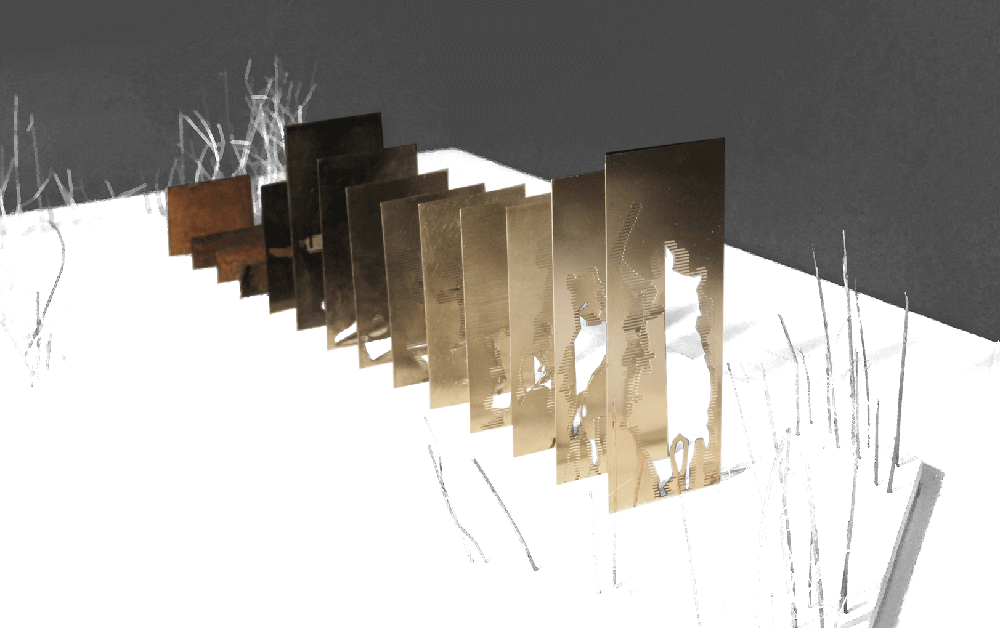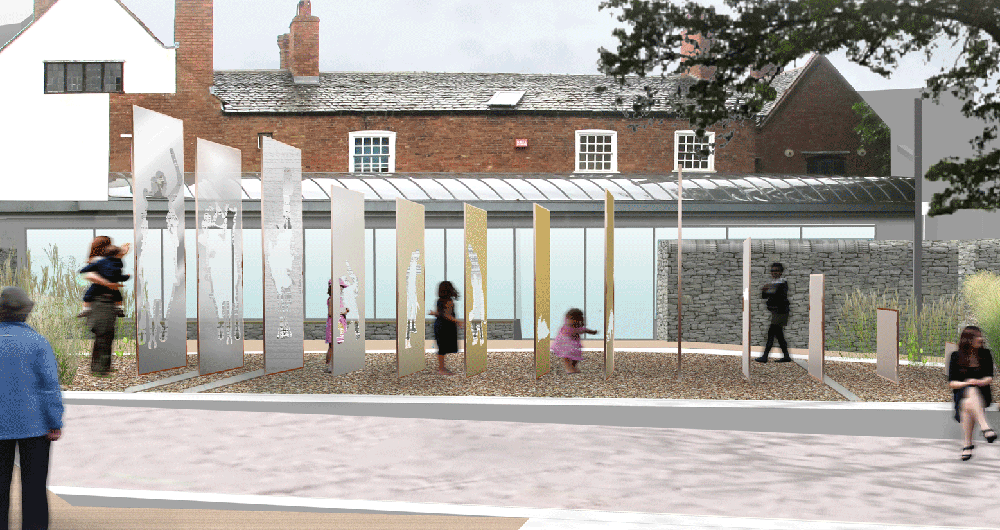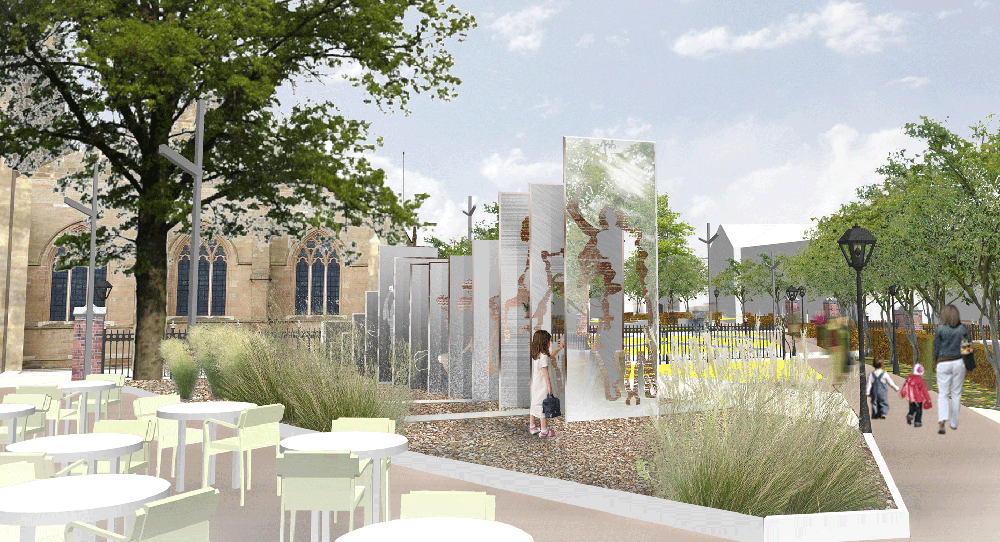
The sculpture commissioned by Leicestershire County Council and chosen from five shortlisted entries as part of the Cathedral Gardens project has caused quite some controversy. Rather than compete with the existing traditional statue of King Richard III by James Walter Butler, the council chose to complement it with a modern interpretation, Towards Stillness, a series of panels that will depict the last 500 years of Richard III’s death and public afterlife. The James Walter Butler sculpture, commissioned and contributed by members of the Richard III Society in 1980, will join Towards Stillness in the Cathedral gardens. Some of the reactions to the artist impressions have been adverse, with fears it will look out of place and context.
However the art of visual storytelling is not a modern concept. From cave painting, to the Bayeux Tapestry, to the illuminated manuscripts painstakingly collected by Edward IV, Richard III’s older brother and founder of the Royal Library, the art of visual storytelling is as old as man itself. Dallas Pierce Quintero’s visual timeline will represent the death of King Richard III in battle and the moving of his body to Leicester, followed by its display, burial and finally its rediscovery. Juliet Quintero, director of Dallas Pierce Quintero, joined us to discuss their vision for Towards Stillness.
“Our brief was to create a sculpture which links Bosworth, the place of King Richard III’s death with Leicester, where he was buried and rediscovered and for us the obvious link was his body itself and the journey that it has endured until now,” Juliet told us.
“In developing the concept for the sculpture we were keen to make it accessible as possible, relying on the universally recognisable shape of the human figure to tell the story. There will be a new visitor centre nearby which will provide the visitor with all the historical background and facts, but for us our brief is to convey his life at a human scale – as life-size silhouettes cut out of a series of steel panels. In this way, we will be focusing on a series of key moments which we will display as human form vignettes, which, stripped back and in the absence of text and images, we hope will be a time-less portrayal of his life.”
“This sequence of vignettes, together with the way these panels will be displayed chronologically, and whilst we were influenced by the stop-motion photographs of Eadweard Muybridge, the sculpture does suggest some links with other art forms such as medieval tapestry. The main difference being that the sculpture is life-size.”

The size and scope of the sculpture will have an intense visual impact on the viewer, who will be encouraged to walk between the panels to see the individual designs and also the overlaid vignettes created by looking through the voids.
“The intention is that by focusing on the space of the silhouette, viewers are invited to create their own image of King Richard III’s final journey – to fill in the blanks with their imagination,” Juliet explains.
The artwork will be orientated towards Bosworth Field, and is read from west to east with the first plate, in polished stainless steel, depicting Richard III charging towards Henry Tudor. The quality of the steel will diminish with each panel, conveying the violence inflicted upon the king until ultimately the steel is completely rusted, symbolising his burial in Leicester.

“The first panel will be polished stainless steel referencing Kind Richard III at the height of battle, mounted and in shining armour,” Juliet explains. “The subsequent panels will gradually degrade in quality until the final corten panel, which will present a rich patina of rust on the surface and symbolise the moment when his grave was discovered and his mortal remains pulled from the earth. Using different finishes of steel in this way we hope to represent the weathering of nature and the degradation of his body over time.”
“We hope that it will inspire contemplation in the viewer and perhaps a new understanding of and connection with the life of someone who lived and died centuries ago.”
Visit Dallas Pierce Quintero to see more of their public art.
All images ©Dallas Pierce Quintero

